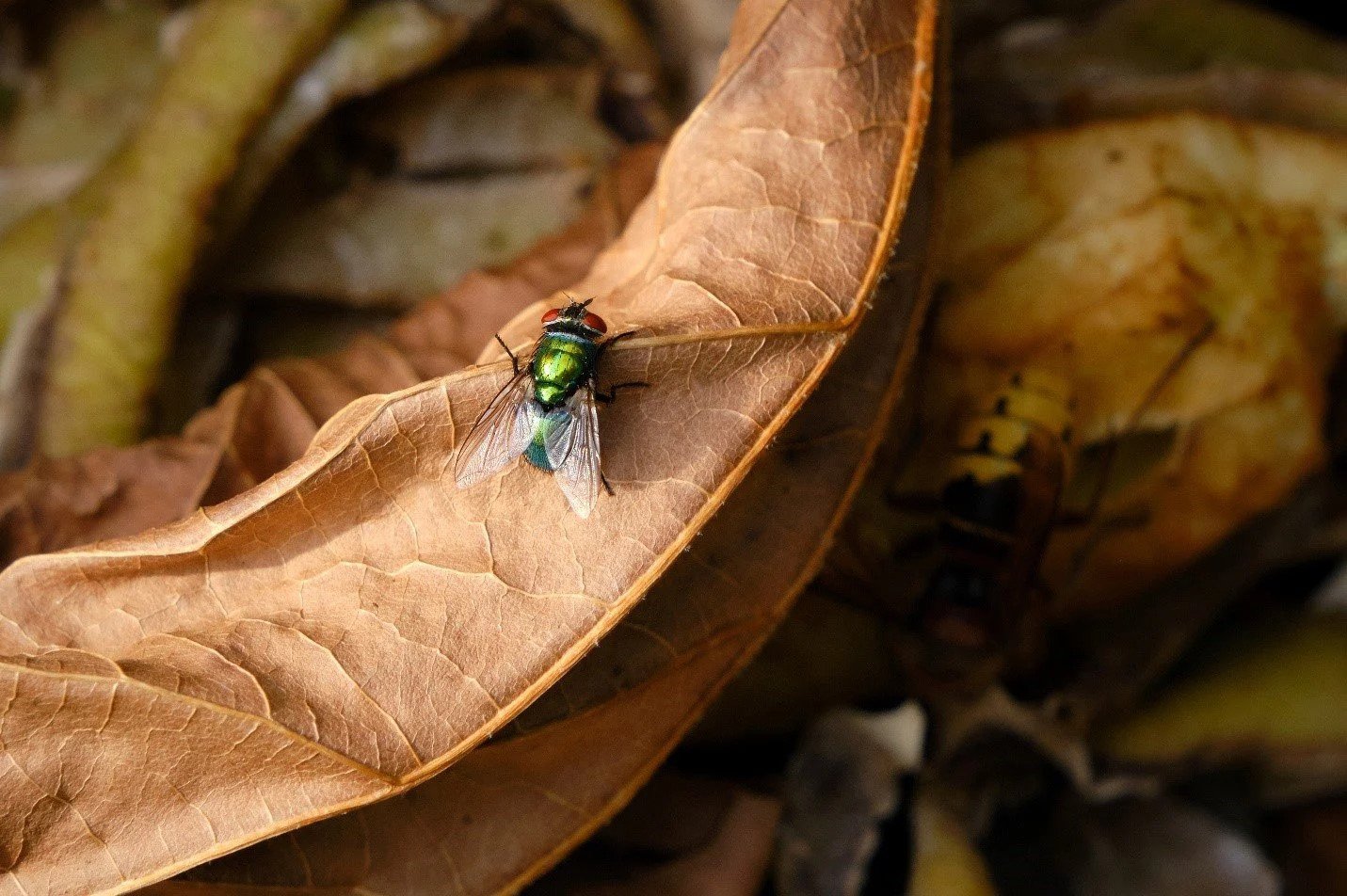Home>Gardening News and Trends>Latest News>What Bugs Are Not Insects


Latest News
What Bugs Are Not Insects
Published: December 9, 2023
Discover the latest news on what bugs are not insects. Explore the important distinctions between bugs and insects in this comprehensive article.
(Many of the links in this article redirect to a specific reviewed product. Your purchase of these products through affiliate links helps to generate commission for Chicagolandgardening.com, at no extra cost. Learn more)
Table of Contents
Introduction
Welcome to the fascinating world of bugs! When we think of bugs, we often imagine tiny creatures crawling on the ground or buzzing around our heads. However, not all bugs are insects. While insects are a diverse and abundant group of animals, they represent just a fraction of the overall bug population. In this article, we will explore what bugs are and what distinguishes insects from other arthropods.
As humans, we have a natural fascination with the natural world and its myriad of creatures. Bugs, in particular, capture our attention due to their small size, often bright colors, and sometimes peculiar behaviors. However, it is essential to understand that not all bugs belong to the insect family.
Insects are a class of invertebrate animals characterized by their jointed legs, external skeletons, segmented bodies, and specialized mouthparts. They are the most diverse group of animals on Earth, with over a million known species. From the delicate fluttering of a butterfly’s wings to the industrious buzzing of a bee, insects play vital roles in ecosystems and contribute to the balance of nature.
But what exactly qualifies as a bug? Bug is a broad term that encompasses various small creatures. It is commonly used to refer to any tiny or creepy-crawly creature, but in the scientific context, bugs have a more specific definition. Bugs are a subset of insects that belong to the order Hemiptera. These creatures have specialized mouthparts, typically modified into a beak or a rostrum, which they use to pierce and suck fluids from plants or other animals.
Definition and Characteristics of Insects
Insects are a class of invertebrate animals that belong to the phylum Arthropoda. They are characterized by their distinctive body structure, which consists of three main parts: the head, thorax, and abdomen. Insects exhibit a wide range of sizes, shapes, and colors, making them one of the most diverse groups of animals on the planet.
One of the defining characteristics of insects is their exoskeleton, a hard outer covering that provides support and protection. This exoskeleton is made of a substance called chitin, which is also found in the shells of crustaceans and the cell walls of fungi. The exoskeleton not only protects the insect’s internal organs but also serves as a point of attachment for muscles.
Insects have three pairs of jointed legs attached to their thorax, allowing them to move and navigate their environment. Most insects also have wings, although there are some exceptions. The presence of wings enables insects to fly, which is a significant advantage when it comes to finding food, mates, and shelter.
Another key characteristic of insects is their unique respiratory system. Instead of lungs like mammals, insects have a network of tiny tubes called tracheae that transport oxygen directly to their cells. These tracheae are connected to small openings in the insect’s exoskeleton called spiracles. Through rhythmic contractions of their body, insects can control the flow of air in and out of these spiracles, facilitating gas exchange.
Reproduction in insects is typically sexual, with separate male and female individuals. Most insects undergo metamorphosis, a process of transformation from egg to larva, pupa, and finally adult form. This allows insects to occupy different ecological niches and adapt to various lifestyles.
One of the key reasons for the tremendous success of insects as a group is their ability to adapt and thrive in a wide range of habitats. Insects can be found in almost every corner of the world, from icy tundras to scorching deserts, and from dense forests to urban environments. They have evolved numerous survival strategies, including camouflage, mimicry, and chemical defenses, to avoid predators and ensure their survival.
What Qualifies as a Bug?
While the term “bug” is often used colloquially to refer to any small insect-like creature, it has a more specific meaning in the realm of entomology. In scientific classification, bugs belong to the order Hemiptera, which is a subset of the insect class. These insects have certain characteristics that set them apart from other insects.
The defining feature of bugs is their specialized mouthparts, typically modified into a beak or a rostrum. This unique structure allows them to pierce and suck fluids from plants, animals, or other insects. Bugs are true bugs, while other insects may have different feeding mechanisms, such as mandibles for chewing or sponging mouthparts for consuming liquids.
Another distinguishing characteristic of true bugs is the configuration of their wings. Bugs have two pairs of wings, but the front pair is hardened and thickened at the base, while the hind wings are usually membrane-like and used for flying. When at rest, bugs fold their wings flat over their bodies, creating a distinct “X” shape. This differs from other insects that have wings that fold along their body without forming the “X” pattern.
Furthermore, bugs undergo incomplete metamorphosis, where they go through three main stages: egg, nymph, and adult. In this type of metamorphosis, the nymphs resemble miniature versions of the adults, gradually growing and molting as they develop. This is in contrast to other insects that undergo complete metamorphosis, such as butterflies, where the larval stage (caterpillar) looks dramatically different from the adult.
It’s important to note that not all small creepy crawlies are bugs. Spiders, ticks, mites, and scorpions, for example, do not belong to the order Hemiptera and therefore are not considered bugs. These arachnids are part of a different taxonomic group known as arachnids. While they may share some similarities with bugs, such as their small size and ability to elicit fear in some people, they have distinct anatomical and behavioral characteristics that set them apart.
Understanding the distinction between bugs and other insects is crucial for accurately identifying and studying these organisms. It allows scientists to classify and categorize species based on their unique characteristics, contributing to our understanding of biodiversity and the important ecological roles that insects play in the natural world.
Insects vs. Other Arthropods
Insects are just one group within the larger phylum Arthropoda, which includes a wide array of other organisms with jointed legs and exoskeletons. While insects represent the largest and most diverse class within this phylum, there are significant differences between insects and other arthropods.
One major distinction lies in the body structure. Insects have three distinct body segments: the head, thorax, and abdomen. Other arthropods, such as crustaceans (e.g., crabs, lobsters) and arachnids (e.g., spiders, scorpions), have different body configurations. Crustaceans have two main body parts: the cephalothorax and the abdomen, while arachnids typically have two main segments: the cephalothorax and the abdomen.
Furthermore, insects have six legs, while many other arthropods, such as spiders and scorpions, have eight legs. This difference in leg count is a notable characteristic when distinguishing between insects and other arthropods.
In terms of habitat and behavior, insects and other arthropods also differ. Insects are found in terrestrial, freshwater, and even some marine environments. They have colonized nearly every corner of the planet and have adapted to various ecological niches. Other arthropods, like crustaceans, are primarily aquatic and can be found in oceans, lakes, and rivers. Arachnids, on the other hand, are predominantly terrestrial and are commonly found in dry environments.
Another key difference is in reproduction. While insects typically reproduce sexually with distinct male and female individuals, other arthropods may have different reproductive strategies. Some crustaceans, for example, can reproduce both sexually and asexually, producing genetically identical offspring through a process called parthenogenesis. Arachnids also have diverse reproductive mechanisms, including internal fertilization and complex courtship behaviors.
Despite these differences, insects and other arthropods share some common traits. They all have exoskeletons made of chitin, which serve as protection and support for their bodies. Additionally, they all undergo molting, shedding their old exoskeleton to allow for growth.
Understanding the distinctions between insects and other arthropods is essential for biologists and researchers. It helps them classify and study different groups of organisms, providing insights into their evolutionary relationships, ecological roles, and impacts on ecosystems.
Common Misconceptions About Bugs
When it comes to bugs, there are numerous myths and misconceptions that have been perpetuated over time. These misconceptions often arise due to fear, limited knowledge, or cultural beliefs. Here, we debunk some of the most common misconceptions about bugs:
- All bugs bite or sting: While it is true that some bugs have the ability to bite or sting, not all bugs are harmful to humans. In fact, the majority of insects are harmless and play important roles in pollination, decomposition, and maintaining ecological balance.
- All bugs are pests: While some insects can be considered pests when they invade our homes or crops, it is important to remember that many bugs actually provide valuable ecosystem services. For example, bees are essential pollinators, and ladybugs help control aphid populations in gardens.
- All bugs transmit diseases: While certain insects, such as mosquitoes and ticks, can transmit diseases like malaria, dengue fever, or Lyme disease, it does not mean that all bugs carry and spread diseases. The majority of insects pose no threat to human health and are harmless to interact with.
- All insects are harmful to plants: While there are plant-eating insects known as herbivores, many insects have beneficial relationships with plants. Bees and butterflies, for example, aid in pollination, which is essential for the reproduction and survival of many plant species.
- All bugs are dirty: Bugs often get a bad reputation for being dirty or unclean. However, many insects have elaborate grooming behaviors and keep themselves very clean. In fact, they play an important role in nutrient cycling by decomposing organic matter and breaking it down into useful components.
- All bugs are pests to be eradicated: While it is understandable to want to get rid of insects that invade our homes or cause damage to crops, it is essential to understand the broader ecological implications. Insects are vital components of ecosystems, and their loss can disrupt the delicate balance of nature.
Understanding these misconceptions is crucial for fostering a more informed and balanced perception of bugs. By dispelling these myths, we can appreciate the intricate relationships insects have with the environment and recognize their importance for the functioning of ecosystems.
Examples of Non-Insect Bugs
While insects are a fascinating group of animals, not all bugs are insects. Bugs, as defined in the scientific context, belong to the order Hemiptera. However, there are other creatures that are commonly referred to as bugs due to their small size or resemblance to insects. Let’s explore some examples of non-insect bugs:
- Spiders: Spiders belong to the class Arachnida and are characterized by their eight legs. Although they are often mistaken for insects, spiders are not bugs. They are skilled predators that use silk to spin intricate webs for catching prey.
- Scorpions: Scorpions are arachnids that have two pincers, a segmented body, and a long, curved tail with a venomous stinger at the end. Found in various habitats worldwide, scorpions are known for their ability to fluoresce under ultraviolet light.
- Centipedes: Centipedes are elongated arthropods with numerous pairs of legs. They are predatory creatures that use their venomous claws to capture and subdue their prey. While they might be arthropods, they are not classified as insects.
- Millipedes: Millipedes are often mistaken for centipedes, but they are a different group of arthropods. Millipedes have a long, segmented body and numerous pairs of legs, although they have less venomous capabilities and are primarily detritivores, feeding on decaying organic matter.
- Crabs: Crabs are crustaceans that belong to the order Decapoda. They have a hard exoskeleton, a pair of claws, and ten legs. Although they may be small and scuttle around like insects, crabs are not classified as bugs.
- Butterflies: Butterflies, along with moths, belong to the order Lepidoptera. While they share certain characteristics with insects, such as having six legs and wings, their taxonomy places them in a separate category. Butterflies undergo a remarkable transformation from caterpillar to pupa before emerging as adult winged insects.
These examples highlight that the term “bugs” is often used colloquially to refer to a variety of small creatures. While they may share similar attributes with insects, it is important to recognize the distinctions in their taxonomy and characteristics.
Conclusion
Exploring the world of bugs reveals a diverse and captivating array of creatures. While insects are the most well-known and abundant group within the bug family, not all bugs are insects. Bugs, in the scientific context, refer specifically to insects belonging to the order Hemiptera.
Insects, with their unique characteristics such as exoskeletons, jointed legs, and specialized mouthparts, play crucial roles in ecosystems as pollinators, decomposers, and even as food sources for other animals. They have evolved over millions of years to adapt to various habitats and contribute to the complex web of life on our planet.
However, there are other creatures commonly referred to as bugs that are not classified as insects. From spiders and scorpions to centipedes and crabs, these organisms belong to different taxonomic groups and exhibit distinct characteristics. Understanding the differences between insects and other arthropods enriches our knowledge of the natural world and helps us appreciate the incredible diversity of life.
By challenging common misconceptions about bugs, such as the belief that all bugs bite or transmit diseases, we gain a more accurate understanding of these remarkable creatures. Learning about their ecological importance, beneficial relationships with plants, and their varied lifestyles contributes to our appreciation of their value in maintaining balanced ecosystems.
So, the next time you encounter a bug, take a moment to observe and appreciate its unique traits and consider the fascinating world it represents. Bugs are not just small, insignificant creatures; they are integral parts of our interconnected natural world, deserving of our curiosity and respect.







